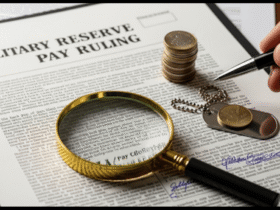In the fast-paced world of commerce, clarity and brevity go hand in hand. One way businesses achieve. both is through the use of abbreviations. Whether you’re reading emails, corporate documents, or LinkedIn profiles, you’re bound to run into “business abbr.”—short for business abbreviations.
But what exactly do they mean, and why should you care?
Let’s break down the essentials of business abbreviations, why they matter, and which ones you should definitely know.
What Are Business Abbr.?
Business abbreviations are shortened forms of commonly used business terms, phrases, or titles. They’re designed to save time, space, and effort—especially in written communication.
For example:
- CEO = Chief Executive Officer
- ROI = Return on Investment
- B2B = Business to Business
Some are used internally among teams, while others appear in contracts, marketing materials, or corporate websites.
Why Are Business Abbreviations Important?
Imagine you’re entering a business meeting and someone keeps referring to KPIs, EBITDA, and CRM systems. If you don’t know these terms, you’re likely to feel lost.
Using and understanding business abbr. helps you:
- Communicate more efficiently
- Understand key business metrics and reports
- Navigate corporate culture more easily
- Appear more professional and informed
Whether you’re an entrepreneur, employee, or freelancer, these abbreviations give you a shortcut to speaking the language of business.
Most Common Business Abbr. and What They Mean
Let’s take a look at some of the most frequently used business abbreviations, categorized by their usage:
Executive & Job Titles
- CEO – Chief Executive Officer
- CFO – Chief Financial Officer
- COO – Chief Operating Officer
- CMO – Chief Marketing Officer
- HR – Human Resources
- VP – Vice President
Financial & Metrics
- ROI – Return on Investment
- KPI – Key Performance Indicator
- P&L – Profit and Loss
- EBITDA – Earnings Before Interest, Taxes, Depreciation, and Amortization
- AR/AP – Accounts Receivable / Accounts Payable
Marketing & Sales
- CRM – Customer Relationship Management
- CTA – Call to Action
- SEO – Search Engine Optimization
- B2B/B2C – Business to Business / Business to Consumer
- USP – Unique Selling Proposition
Corporate & Legal
- LLC – Limited Liability Company
- Inc. – Incorporated
- RFP – Request for Proposal
- NDA – Non-Disclosure Agreement
- IPO – Initial Public Offering
Digital & Tech
- SaaS – Software as a Service
- API – Application Programming Interface
- UX/UI – User Experience / User Interface
- IoT – Internet of Things
- ERP – Enterprise Resource Planning
How to Learn Business Abbreviations Quickly
It can feel overwhelming at first, but here are a few tips to get comfortable with business abbr.:
- Context is key: Learn abbreviations within real-world examples. Reading case studies, news articles, or even LinkedIn posts helps.
- Create a cheat sheet: Maintain your own list of common abbreviations that apply to your field or role.
- Use flashcards or apps: Tools like Quizlet or Notion can help you review and test yourself.
- Ask when unsure: No shame in asking someone, “What does KPI mean again?” Better to ask than guess wrong.
Are Business Abbreviations Always the Best Option?
Not necessarily. While abbreviations are helpful, overusing them can lead to confusion—especially for new hires, international clients, or people outside your industry.
Use them wisely. If your audience may not be familiar with an abbreviation, spell it out the first time and add the abbr. in parentheses.
Example: “Our Return on Investment (ROI) has increased by 12% this quarter.”
FAQs: Business Abbr.
Q1: What is the difference between an acronym and an abbreviation?
A: An abbreviation shortens a word or phrase (e.g., Inc. for Incorporated), while an acronym is formed from the first letters of multiple words (e.g., CEO for Chief Executive Officer). Acronyms are a type of abbreviation.
Q2: Are business abbreviations the same worldwide?
A: Not always. While many are universal (like ROI or CEO), some differ by country or industry. For example, LLC is common in the U.S., while LTD is used in the UK for similar company structures.
Q3: How can I avoid sounding robotic using business abbr.?
A: Use them naturally and only when relevant. Balance your communication with full words when needed, and ensure your audience understands the meaning.
Q4: Do business abbreviations evolve over time?
A: Absolutely. As new technologies and trends emerge, so do new abbreviations—like AI (Artificial Intelligence) or NFT (Non-Fungible Token). Keeping up-to-date is part of staying business-savvy.
Q5: Can I use business abbreviations in formal writing?
A: Yes, but always define them the first time unless you’re sure your audience is familiar. Overuse can make formal writing feel impersonal or confusing.
Final Thoughts
“Business abbr.” might seem like corporate jargon at first glance, but once you understand them, they become incredibly useful tools. They simplify communication, increase clarity, and let you speak the language of professionals around the world.















Got a Questions?
Find us on Socials or Contact us and we’ll get back to you as soon as possible.